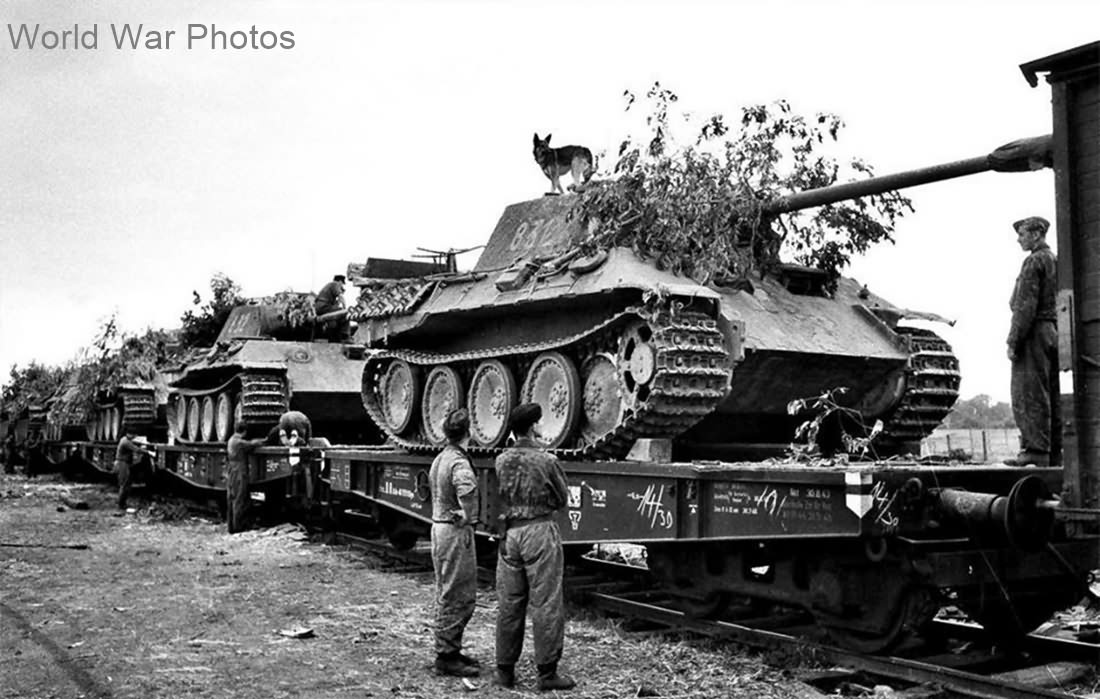The 5th SS Panzer Division “Wiking” was one of the most prominent Waffen-SS armored divisions during World War II. Initially formed in December 1940 as the SS Division “Germania”, it was soon renamed “Wiking” and included multinational volunteer units, with soldiers from several European countries, particularly Norway, Denmark, the Netherlands, Belgium, and others.
Formation and Early History
The division initially comprised:
- SS Regiment “Germania”
- SS Regiment “Nordland” (raised from Danish and Norwegian volunteers)
- SS Regiment “Westland” (raised from Dutch and Belgian volunteers)
- 5th SS Artillery Regiment
In November 1942, the division was reorganized into the SS Panzer Grenadier Division “Wiking” while fighting in the Caucasus during the German campaign into the Soviet Union. It was later redesignated as the 5th SS Panzer Division “Wiking” in October 1943.
Combat History
Eastern Front
Russia, 1941-1942: From June 1941, the division participated in Operation Barbarossa, the invasion of the Soviet Union. It fought through southern Russia, reaching as far as the Caucasus by 1942. This operation aimed to secure oil fields and was part of the larger push into the Soviet Union.
Caucasus and Retreat: In November 1942, while in the Caucasus, the division was reformed into a Panzer Grenadier Division. During the Soviet counteroffensive in early 1943, it was forced to retreat, first engaging at the Manych River with Fourth Panzer Army and then with First Panzer Army around Kharkov.
Kharkov, 1943: The division played a key role in the Third Battle of Kharkov (February-March 1943), participating in the German counterattacks to retake the city. However, as the war progressed, it was pushed back to the Dnepr bend.
Redesignation as 5th SS Panzer Division “Wiking”: On October 22, 1943, the division was redesignated from a Panzer Grenadier Division to a full Panzer Division, reflecting its increased armored capabilities.
Kovel, 1944: From January to March 1944, the division fought in the southern sector of the Eastern Front. Later in the year, it was redeployed to Kovel, east of Lublin, Poland, and was involved in defensive operations against Soviet advances.
Reorganization and Return to the Front
- Germany, 1944: Between May and July 1944, the division returned to Germany for refitting at Heidelager, a training ground near Krakow. During this period, it was reorganized and reequipped before being sent back to the Eastern Front.
Hungary and Austria, 1945
Hungary, 1945: In January 1945, the 5th SS Panzer Division “Wiking” was transferred south to Hungary. It participated in defensive operations in an attempt to halt the Soviet advance toward Vienna. As Soviet forces continued to push forward, the division was eventually forced to retreat into Austria.
End of the War: The division surrendered in Graz, Austria, in May 1945, where the majority of its surviving members were captured by American forces.
Organizational Structure
Throughout its existence, the 5th SS Panzer Division “Wiking” underwent numerous reorganizations and expansions. By the end of the war, the division consisted of the following units:
- Aufklärung Abteilung 5 SS Panzer Division “Wiking” (Reconnaissance Battalion)
- SS Panzer Abteilung “Wiking” (two battalions of tanks)
- SS Panzer Grenadier Regiment 9 “Germania” (three battalions)
- SS Panzer Grenadier Regiment 10 “Westland” (three battalions)
- SS Artillerie Regiment 5 (four battalions)
- Flak Abteilung 5 SS Panzer Division “Wiking” (Anti-Aircraft Battalion)
- Panzerjäger Abteilung 5 SS Panzer Division “Wiking” (Tank Destroyer Battalion)
- Nachrichten Abteilung 5 SS Panzer Division “Wiking” (Signals Battalion)
- Pioniere Bataillon 5 SS Panzer Division “Wiking” (Engineer Battalion)
- Feldersatz Bataillon 5 SS Panzer Division “Wiking” (Replacement Battalion)
- Versorgungs Einheiten (Supply Units)
Key Changes
- In March 1943, the division structure was altered to accommodate two Panzer Grenadier Regiments with three battalions each. The third battalion of the second regiment was equipped with armored personnel carriers.
- The SS Panzergrenadier Regiment “Nordland” was transferred to form the 11th SS Panzer Grenadier Division “Nordland” in the summer of 1943. In exchange, the division received the Panzergrenadier Battalion “Narva” from the Estonian Legion.
- By late 1943, the division’s Panzer Regiment was expanded to two battalions, and a Sturmgeschütz (assault gun) Battalion was formed.
The 5th SS Panzer Division “Wiking” was notable for its multinational composition, with volunteers from various countries fighting alongside German soldiers under the SS banner. Despite its reputation for being a capable fighting force, the division, like many other Waffen-SS units, was implicated in war crimes during its operations in the Soviet Union.
